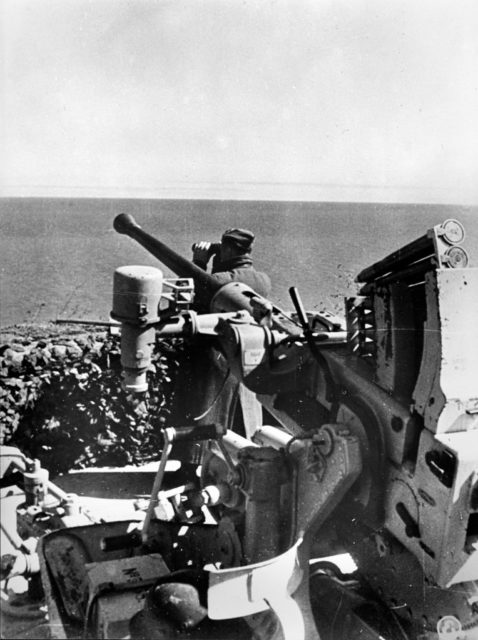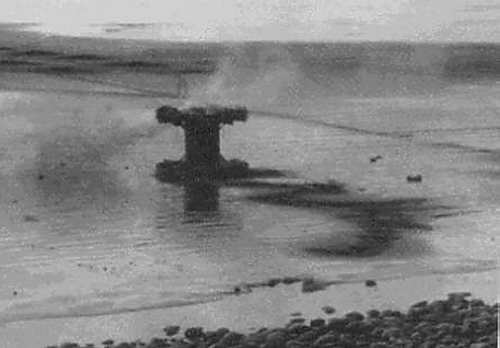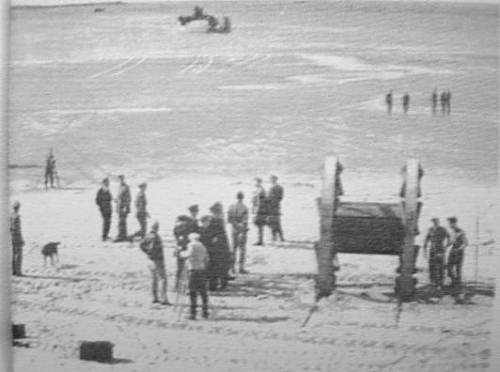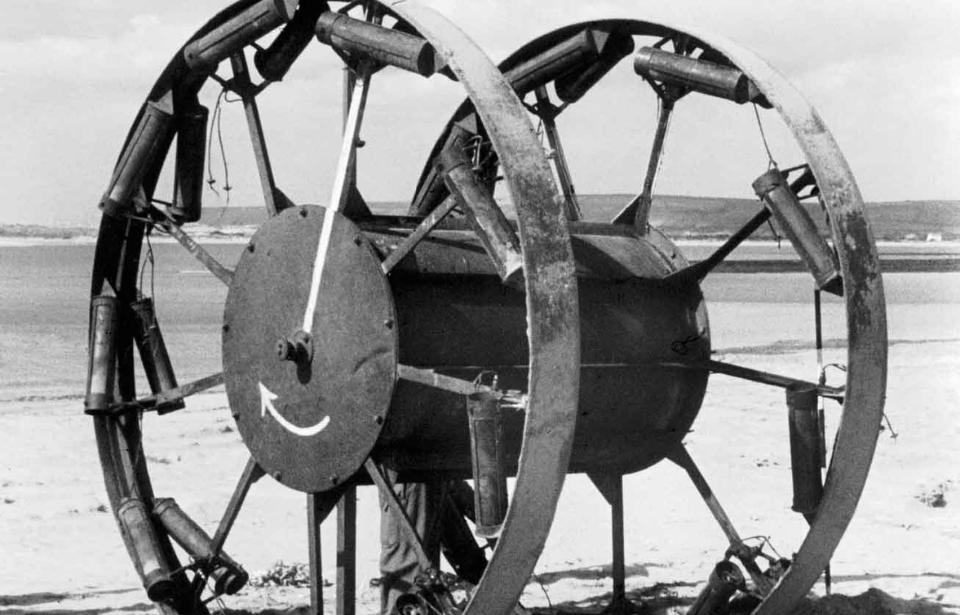By 1943, the Germans had heavily fortified the European coast against an Allied invasion. This defense system, known as the Atlantic Wall, spanned along the Norwegian coast and down mainland Europe to the Spanish border. Made of concrete that was 10 feet high and seven feet thick, it was armed with coastal guns, mortars and batteries, among other fortifications.
The British military knew it needed to develop a weapon that could break through the wall, and the Directorate of Miscellaneous Weapons Development (DMWD) was charged with developing such a device. The result was the Panjandrum, which can only be classified as a colossal disaster.
A rocket-propelled, explosive-filled cart
The DMWD came up with the Panjandrum as its solution to the problems created by the Atlantic Wall. It was constructed of two 10-foot tall wheels that were joined together by a cylinder filled with explosives. The weapon was supposed to be launched from a landing craft and travel through water onto the beach, where it would ideally blow a hole into the concrete. This was to prevent the loss of life that would occur if someone attempted to land on the beaches in front of the German defensive lines.

The goal was for the hole to be large enough for a tank to fit through it. To get the Panjandrum to its target, cordite rockets were added to the insides of the wheels, to act as propulsion. This is where the issues arose. The rockets were highly ineffective and would either not work or detach from the wheels entirely.
Top secret tests on a public beach
In 1943, a working prototype of the Panjandrum was created and sent for testing. The weapon was designed in secret at Leytonstone, and was transported to the testing site with a police guard and under the cover of darkness. Despite this, it was tested on the popular holiday beach of Westward Ho!, in Devon.

When it came time to test the Panjandrum, it was loaded onto a landing craft and launched, all while those on holiday watched from afar. The rockets propelled the weapon from the craft and onto the beach. However, some of them failed, causing it to veer off course. The Panjandrum didn’t stay together, let alone make it far enough to stand a chance against the Atlantic Wall.
If at first you don’t succeed, try, try again
One would think the developers would scrap the Panjandrum and try to come up with something more practical. Instead, they added modifications they hoped would fix the issues and allow the weapon to penetrate the Atlantic Wall.

The DMWD’s modifications included the addition of a third wheel, steel steering cables and even more rockets. Evidently, none of these did enough to make the Panjandrum a viable option. The steering cables, in particular, would snap, making the weapon incredibly dangerous to be around.
Just one more try
After testing different modifications for the Panjandrum, the DMWD ran one final test in January 1944. Its designers must have had high hopes, as there were scientists, naval officers, and official photographers and videographers on site. Unfortunately, all they wound up witnessing was a test that was even more disastrous than the first.
When launched from the landing craft, the Panjandrum, again, made it onto the beach before its rockets started to come free and it no longer moved in a straight line. This time, it traveled toward one of the videographers, who had to run for his life. According to Brian Johnson, one of the men to witness the test, “the assembled admirals and generals [dove] for cover behind the pebble ridge into barbed-wire entanglements” before the weapon finally disintegrated.
More from us: The History of Drop Tanks: From Improvised Bombs to Vietnamese Canoes
While it needs little explanation as to why, the Panjandrum was scrapped by the DMWD and never saw use during the Second World War.
